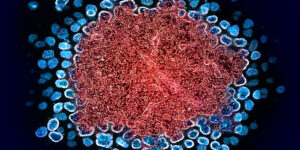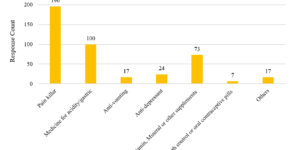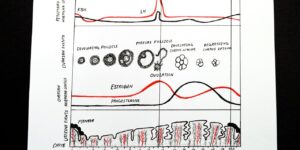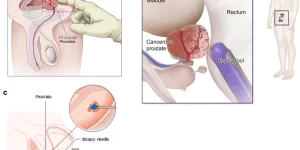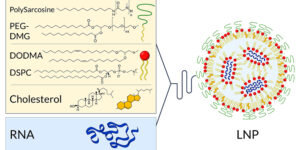Volume 1 , Issue 1 | JSCBR
Nsonwu CC, Ndudim-Dike JN, Nwosu DC, et al. Pattern of changes in some biochemical indicators and prevalence of HIV seropositive people co-infected with tuberculosis at FMC, Owerri, Imo State. Series Clin Biomed Res. 2024;1(1):1-7.
The purpose of this study was to count the number of human immunodeficiency virus (HIV) patients receiving antiretroviral therapy (ART) who were also infected with tuberculosis (TB) and to evaluate the patients' changes in certain biochemical parameters at the Federal Medical Centre in Owerri, Imo State. For this study, 350 HIV-positive patients between the ages of 20 and 79 years old who gave their consent were enrolled. National serial algorithms (Determine, Unigold, and StatPak) were utilized for HIV testing, whereas the GeneXpert machine was used for TB testing. While 4 ml of blood was collected in simple vials and the serum used for biochemical analysis, the biochemical analyses were performed using autoanalyzers. The risk of having both TB and HIV was highest in people aged 70 to 79 (31.11%) and lowest in people aged 50 to 59 (10.0%). According to sex, ladies (15.7%) had a greater prevalence of co-infection than males (14.3%). Between ART and non-ART individuals in this study, the results of the biochemical examinations showed that the ART group's (test subjects') kidney indicators, urea, and creatinine, as well as their liver enzymes (AST, ALT, and ALP), were statistically higher (P < 0.05) than those of non-ART patients (control group). TB co-infection is more likely to affect elderly HIV-positive individuals due to their weakened immune systems by nature. Additionally, people with HIV who are not on ART run the risk of developing opportunistic infections as well as anemia. In addition to the administration of highly active antiretroviral therapy (HAART), they should be managed with additional caution. Antiretroviral medications have the potential to negatively impact vital organs like the kidneys and liver, necessitating therapeutic drug monitoring. To ensure patient compliance, more measures need to be taken by those in charge of managing these patients.
Article DOI: 10.54178/2997-2701.v1i1a1995
Nsonwu M, Ozims SJ, Nnodim JK. Perspective of cataract and oxidative stress. Series Clin Biomed Res. 2024;1(1):1-10.
One of the main causes of blindness is the multifactorial condition known as cataract. It is believed that oxidative stress plays a significant role in starting the cataractogenesis process. Today, it is a well-established fact that oxidative stress plays a role in both diabetes-induced cataract (diabetic) and age-related cataract (senile). The most likely cause of oxidative damage to the lens is a compromised antioxidant defense system brought on by age and diabetes-related increases in reactive oxygen species (ROS) production. The main factor contributing to cataract formation is systemic oxidative stress, which is produced externally to the lens. An imbalance between pro- and antioxidant-oxidants leads to oxidative stress. It is essential to eliminate hazardous free radicals because they are a byproduct of normal metabolism. Globally, cataracts are the primary cause of blindness. Oxidative stress is the direct cause of the lens's opacity. Although age is the main cause of cataracts, diabetes is also a common cause, as higher superoxide levels in the mitochondria arise from hyperglycemia. This review will look into ultraviolet (UV) light, diabetes, and diet (fat, alcohol, and vitamins) as risk factors for cataracts.
Article DOI: 10.54178/2997-2701.v1i1a1994
Md. Abu Bakar Siddique Jami, Rezwana Sultana, Zasharatul Islam. A cross-sectional study regarding the prevalence of premenstrual syndrome (PMS) and its impact on the regular life of female students in Bangladesh. Series Clin Biomed Res. 2024;1(1):1-14.
Background: Premenstrual syndrome (PMS) causes a variety of disturbing symptoms that can affect mood, cognition, and physical well-being and have effects on the regular lives of females, especially students.
Objective: Assessment of female students’ knowledge, attitude, and awareness regarding PMS, evaluation of the prevalence of PMS in Bangladesh, and its impact on the regular life of female students in Bangladesh.
Study Design: Cross-sectional study using a semi-structured questionnaire.
Method: Primary data were collected by conducting an online survey with a semi-structured questionnaire. Data collection was carried out from March 2021 to October 2021. The subjects’ age range was 13–35. A total of 366 female students participated in the survey from different demographic profiles.
Results: 74.86% of respondents were between the ages of 21 and 25, and they were mostly undergraduate students (71.31%). 77.05% of respondents were familiar with the term PMS. PMS symptoms were experienced by almost all participants (94%) to different extents. 140 participants (38%) experienced PMS one week before their period. On the other hand, 152 participants (42%) were moderately affected by PMS physical symptoms. 43% of participants rated PMS psychological and behavioral symptoms as moderately severe. The most common PMS symptom, according to 259 female students, was cramping, followed by headache and backache. PMS causes 65.85% of participants to lose concentration during educational activities. 59.56% of the participants claimed PMS causes difficulty at work and in other regular activities.
Conclusion: PMS is highly prevalent among female students in Bangladesh. The majority of students experience a lack of concentration on educational activities due to PMS. PMS has an impact on both their personal and professional lives. Personal hygiene, sexual health, and overall awareness about PMS should be promoted more through education and social awareness programs.
Article DOI: 10.54178/2997-2701.v1i1a1993
Md. Abu Bakar Siddique Jami, Rezwana Sultana, Md. Mazedul Hasan, et al. Menstrual health and prevalence of menstrual disorders among modern society females in Dhaka, Bangladesh: a cross-sectional study. Series Clin Biomed Res. 2024;1(1):1-12.
Background: Menstrual disorders affect women all around the world, although they are still viewed as minor health problems.
Objective: The objective of this study is to investigate the prevalence of menstrual disorders among modern society females in Dhaka, Bangladesh, and explore potential factors that may influence these disorders.
Study Design: It is a cross-sectional study using a convenient sampling technique.
Method: A convenient sampling technique was used to collect primary data through a semi-structured questionnaire from 342 female residents of Dhaka, aged at least 15 years, between April 2021 and August 2021. Participants were from different demographic backgrounds.
Results: The mean age of respondents was 22 years ± 8.03. Participants were predominantly educated, with many pursuing undergraduate studies. They mostly belonged to nuclear families (77.7%) and middle (59.5%) to upper-middle (33.1%) socio-economic classes. Prevalent premenstrual symptoms included a change in mood (71.6%), cramps (68.9%), abdominal bloating (45.9%), and breast discomfort (38.5%). Dysmenorrhea (50.6%) and menorrhagia (35.2%) were common, while polymenorrhea (10.8%) and oligomenorrhea were less frequent. Despite some knowledge about the negative influence of junk foods on menstrual health, a significant proportion of participants reported consuming junk foods regularly. Most participants had easy access to sanitary napkins and menstrual hygiene products.
Conclusion: Menstrual disorders are prevalent among young women in modern Dhaka despite their good education rate. Lifestyle and diet are linked to their prevalence. Healthcare professionals must educate and counsel women on menstrual health. Collaborative efforts among professionals, policymakers, and researchers are needed to raise awareness and support women in managing these issues.
Article DOI: 10.54178/2997-2701.v1i1a1992
Nnodim JK, Ike IM, Nwanguma E. The lipidosis profiling and C-reactive protein evaluated in patients with prostate cancer attending Madonna University Teaching Hospital in Elele. Series Clin Biomed Res. 2024;1(1):1-7.
One prevalent malignant tumor of the male prostate epithelium is called prostate cancer (PCa). The purpose of this study is to assess the C-reactive protein (CRP) and lipid profile of patients with PCa at Madonna University Teaching Hospital (MUTH), Elele. For the study, 50 hospital patients were enlisted. 20 of them were control patients, meaning they were not PCa patients, and the remaining 30 were patients with PCa and ranged in age from 25–65. All those engaged provided their informed permission and ethical clearance properly. Venipuncture was used to get blood samples. Enzyme-linked immunosorbent assay (ELISA) was used to analyze CRP, while total cholesterol (TCH), triglycerides (TG), high-density lipoprotein (HDL), and low-density lipoprotein (LDL) were measured using an enzymatic spectrophotometric approach. Data obtained from this study was analyzed using Statistical Package for Social Sciences (SPSS) version 21 for Windows 7 and one-way analysis of variance (ANOVA), which were used to compare the means. The results were expressed as mean ± SD and values were considered significant at p < 0.05 and non-significant at p > 0.05. Results from this study showed a significant difference (p < 0.05) in the mean values of the following: TCH levels in PCa patients (6.39 ± 0.90 mmol/L) when compared to the control group (4.10 ± 0.50 mmol/L), TG levels in PCa patients (1.84 ± 0.27mmol/L) when compared with the control group (1.26 ± 0.24 mmol/L), HDL levels in PCa patients (0.92 ± 0.10 mmol/L) when compared with the control group (1.02 ± 0.11 mmol/L), LDL levels in PCa patients (4.45 ± 1.00 mmol/L) when compared with the control group (2.33 ± 0.38 mmol/L) and CRP levels in PCa patients (4.48 ± 0.77 mg/L) when compared with the control group (3.44 ± 0.80 mg/L). This probably indicates that the PCa group developed biochemical alteration in lipid profile and CRP parameters within an increased period of time.
Article DOI: 10.54178/2997-2701.v1i1a1991
Nnodim JK, Obi-Aziekwe VN, Edward U. Evaluation of anthropometric parameters and lipid profile in subjects with sickle cell traits at Madonna University, Elele, Nigeria. Series Clin Biomed Res. 2024;1(1):1-7.
Sickle cell trait is a genetic condition that affects a substantial portion of the global population, particularly individuals of African descent. This study is aimed at evaluating anthropometric parameters and lipid profile parameters in subjects with sickle cell traits in Madonna University Teaching Hospital (MUTH), Elele. 72 subjects consisting of 30 HbAA (control), 21 HbAS, and 21 HbSS, all aged 18–40 years, were recruited for the study. Ethical clearance and informed consent were duly obtained from those involved. Blood samples were collected via venipuncture. Total cholesterol (TCH), triglyceride (TG), high-density lipoprotein (HDL), and low-density lipoprotein (LDL) were analyzed using enzymatic spectrophotometric method. Body mass index (BMI) was calculated as weight (kg) divided by height squared (m2). Data were analyzed using Statistical Package for Social Sciences (SPSS) version 21 for Windows 7. The result from this study suggests that there are statistically significant differences (p < 0.05) among the genotype variants, HbAA, HbAS, and HbSS, for the TCH, TG, HDL, LDL, and hemoglobin (Hb) levels. For the control group (HbAA), the TCH is 4.51 mmol/L, TG is 1.21 mmol/L, HDL is 0.95 mmol/L, LDL is 2.81 mmol/L, and Hb is 14.02 g/dL. For the HbAS, the TCH is 4.16 mmol/L, TG is 0.73 mmol/L, HDL is 0.92 mmol/L, LDL is 2.82 mmol/L, and Hb is 13.02 g/dL. For the HbSS, the TCH is 3.39 mmol/L, TG is 0.59 mmol/L, HDL is 0.63 mmol/L, LDL is 2.59 mmol/L, and Hb is 10.85 g/dL. Also, the BMI (kg/m2) showed no statistically significant differences among the genotype variants, HbAA, HbAS, and HbSS (p > 0.05). This concludes that lipid metabolism may be altered in red cell genetic disorders such as sickle cell anemia.
Article DOI: 10.54178/2997-2701.v1i1a1990

